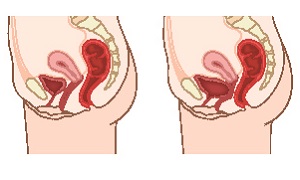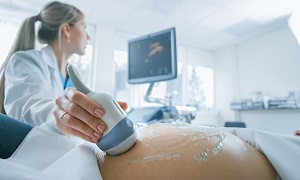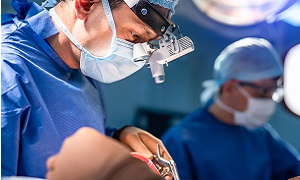Best Doctors in India for Bladder Prolapse Treatment
Best Hospitals in India for Bladder Prolapse Treatment
- City: Mumbai, India
Hospital Highlights:
- Fortis Hiranandani hospital was established in 2007.
- The hospital is an advanced tertiary care, multi-specialty hospital equipped with 149 beds.
- The hospital is equipped with a super ICU to provide emergency medical care to critically ill patients.
- The hospital is NABH accredited.
- The critical care facility in the hospital is augmented with the state-of-the-art facilities that facilitate speedier diagnosis and efficient monitoring.
- The hospital provides specialty medical services in cardiology, orthopedic science, pediatric science, neurology, diabetic care, urology, nephrology, ENT, obstetrics, gynecology, cosmetic surgery, bariatric surgery, neuro and spine care.
- City: Gurugram, India
Hospital Highlights:
- W Pratiksha Hospital, Gurugram, is one of the best hospitals in the NCR region. It is also a top hospital in India for IVF. Since its inception, the hospital has performed over 5500 successful IVFs. The hospital also specializes in gynecology.
- With over 20 years of experience in providing quality healthcare, the hospital is known as one of the most trusted and valued health providers in India.
- Equipped with world-class medical facilities and advanced technology, the hospital’s doctors and clinicians also have a track record of delivering excellent results. The hospital is also known for focusing on preventive well-being as much as on curative treatment.
- The hospital has earned the trust of its patients, by providing the best available treatments at affordable costs.
- City: Gurugram, India
Hospital Highlights:
- Paras hospital was established in 2006 and is the 250 bedded flagship hospital of Paras Healthcare.
- The is supported by a team of doctors of international and national repute.
- The hospital is NABH accredited and also the first hospital in the region to have a NABL accredited laboratory.
- The hospital provides specialty medical services in around 55 departments including Neurosciences, Joint Replacement, Mother & Child Care, Minimal Invasive Surgery, Gynecology and Obstetrics, Ophthalmology, Dermatology, Endocrinology, Rheumatology, Cosmetic and Plastic surgery.
- The hospital is equipped with state-of-the-art technologies.
- City: Kolkata, India
Hospital Highlights:
- Fortis Hospital, Anandapur, Kolkata is a world-class super-speciality equipped with the latest technologies in the medical world.
- The hospital is NABH accredited.
- This state-of-the-art facility specializes in cardiology and cardiac surgery, urology, nephrology, neurosciences, orthopaedics, digestive care, emergency care and critical care.
- The hospital, governed by integrated Building Management System (IBMS), has a pneumatic chute system, for quick vertical and horizontal transportation between floors, facilitating speedy transfer of patient specimens, documents, reports, and medicines to the concerned departments.
- The hospital also has a nephrology department with over 28 advanced dialysis units.
- City: Mumbai, India
Hospital Highlights:
- SL Raheja hospital is a 140-bed multi-specialty tertiary care hospital that is being managed by Fortis Healthcare Ltd.
- The hospital is a benchmark in healthcare and medical facilities in the neighborhood of Mahim & the western suburbs.
- L.Raheja Hospital, Mahim has one of the most effective ICU and Casualty care services.
- The hospital provides specialty medical services in Cardiology, Oncology, Neurology, Orthopedics, Mother & Child Care, and in Diabetes.
- City: Mumbai, India
Hospital Highlights:
- Wockhardt Hospitals were established in the year 1973, originally called First Hospitals and Heart Institute.
- Wockhardt Hospitals are super specialty health care networks in India, nurtured by Wockhardt Ltd, India’s 5th largest Pharmaceutical and Healthcare company.
- Wockhardt Hospitals is associated with Partners Harvard Medical International, an international arm of Harvard Medical School, USA.
- Wockhardt Heart Hospital performed India’s first endoscopic heart surgery.
- The hospital has a state-of-the-art infrastructure equipped with the latest technologies and modern equipment.
- It has special Centers of Excellence dedicated to the major specialties to provide hassle-free and high-quality clinical care.
- City: Gurugram, India
Hospital Highlights:
- The CK Birla Hospital in Gurugram is a NABH-accredited multi-specialty hospital.
- The hospital strives to increase the quality of healthcare by focusing on UK NHS nurse and midwife training requirements. Policies and practices derived from the National Institute for Health and Treatment Excellence (NICE) recommendations in the United Kingdom ensuring that a strong focus on safety, high-quality clinical care, and sanitation is maintained.
- The hospital’s cutting-edge technology and facilities allow for real-time communication and seamless collaboration among caregivers, ensuring accuracy and the best possible results. Those with foreign experience and accreditations make up part of the hospital’s team of clinicians.
- City: Ahmedabad
Hospital Highlights:
- As a member of the Apollo Hospitals Group, Apollo Hospitals International Limited, Ahmedabad is one of the most popular and sought-after medical facilities in Gujarat.
- Through its 6 Centres of Excellence and various affiliated branches, which cover all specialties and subspecialties, the hospital provides the most advanced clinical services.
- Since its inception in 2003, the hospital has been providing each patient with the most up-to-date medical equipment and state-of-the-art technology.
- With more than 150 successful organ transplants, including liver and renal transplants, the facility has been able to build a strong and extensive organ transplant program.
- In addition to performing 600 surgeries and caring for over 1800 patients on an IP basis, the hospital sees more than 18,000 patients on average in the outpatient department.
- With one of the biggest cardiology teams in the area, the hospital provides state-of-the-art regional care treatment in Cardiac Sciences.
- Additionally, the hospital offers a broad range of Neuro Interventional techniques to help stroke patients recover more quickly.
- City: Noida, India
Hospital Highlights:
- Jaypee Hospital is the flagship hospital of the Jaypee Group.
- This hospital has commissioned 525 beds in the first phase and has been planned and designed as a 1200 bedded multi-specialty facility.
- It holds the accreditation of the NABH and NABL.
- The hospital has state-of-the-art infrastructure equipped with the latest technologies and modern equipment like 64 Slice PET CT, Dual Head 6 Slice SPECT CT, Gamma Camera, and Da Vinci Robotic Surgery for comprehensive robotic surgical solutions.
- It has special Centers dedicated to the major specialties to provide hassle-free and high-quality clinical care.
- City: Mumbai, India
Hospital Highlights:
- Reliance Hospital is one of the best super-specialty care hospitals in Navi Mumbai.
- The main purpose of this hospital is to become a trustworthy place for the best health and hope for society. The hospital is well connected to the suburbs of Mumbai and Navi Mumbai.
- The hospital has various specialty departments, viz., Accident & Emergency, Anesthesiology, Dental Services, Dermatology, Diabetology, Dietetics Nutrition, Endocrinology, ENT, Gastroenterology, General Surgery, Gynaecology And Obstetrics, Hepato Pancreato Biliary Surgery, Infectious Disease, Internal Medicine, Interventional Radiology, Laboratory Medicine, Minimal Access Laparoscopic Surgery, Nephrology, Neurosciences, Opthalmology, Orthopaedics, Paediatrics, Pain Management Palliative Care, Physical Medicine Rehabilitation, Plastic And Reconstructive Surgery, Psychiatry, Pulmonary Medicine, Radiology, Rheumatology, Transplant, Urology Andrology, Vascular Surgery
Bladder Prolapse
In women, the bladder is normally held in place by a hammock of supportive pelvic floor muscles as well as tissue. When these tissues are stretched or get weak, the bladder may drop or bulge through this layer and into the vagina. This can lead to bladder prolapse, which is also termed a cystocele. The prolapsed bladder may appear at the opening of the vagina as well, in severe cases. Sometimes it might even protrude through the vaginal opening.
Bladder prolapse is a common condition among women. The symptoms can be bothersome, but they are treatable. A prolapsed bladder is rarely a life-threatening condition, and in most cases, it is treatable without surgery. Sometimes even severe prolapsed bladders can be corrected without any form of surgery.
Symptoms
The first symptom that women with a prolapsed bladder might notice is the presence of tissue in the vagina that many women can describe as something that can feel like a ball.
A prolapsed bladder can have several other symptoms which can include the following:
- Difficulty while urinating
- Pain or discomfort in the pelvis
- Tissue protruding from the vagina
- A feelings that the bladder is not empty immediately following urination
- Stress
- Incontinence
- More frequent infections in the bladder
- Lower back pain
- Painful intercourse
Some women might not experience or notice symptoms if their condition is mild.
However, women who notice symptoms of a prolapsed bladder should see a doctor immediately. A prolapsed bladder can also be associated with prolapses of other organs within a woman’s pelvis. Timely medical care is important to evaluate for as well as prevent any problematic symptoms as well as complications caused by weakening tissue as well as muscle in the vagina. Prolapsed organs are unable to heal themselves, and may worsen over time. Several treatments are available to correct a prolapsed bladder.
Causes
The most common factors associated with a prolapsed bladder include the following-
Childbirth: This is known as the most common cause of a prolapsed bladder. The delivery process is stressful on the vaginal tissues as well as muscles, which support the bladder.
Straining: Lifting objects that are too heavy or straining during a bowel movement, or having a long-term condition that causes coughing, or having long-term constipation can also damage the muscles of the pelvic floor.
Estrogen: Estrogen is a hormone that helps to maintain the strength as well as the health of muscles in the vagina. This hormone is not produced after menopause. This can lead to a prolapsed bladder as well.
Diagnosis
Bladder prolapse can be easily detected with a clinical history and a pelvic exam. The exam can be performed while a patient is lying down, straining or pushing, or even standing. Your doctor or healthcare worker might need to measure how serious the prolapse is and which parts of the vagina are falling.
Few other tests and imaging studies might also be required to check the pelvic floor, such as:
- Urodynamics
- X-rays
- Cystoscopy
- Ultrasound
- MRI
Treatment
If the condition is mild and does not produce any pain or discomfort, then you might not require any medical or surgical treatment. A patient having a mild prolapsed bladder should, however, refrain from heavy lifting or straining, and this might be recommended by your doctor.
If your case is more serious, then various factors will be taken into account by your doctor, such as the patient’s health, treatment preference, and most importantly, the severity of the condition.
Non-surgical treatments
Pessary
A pessary is a tool placed within the vagina to help in holding the bladder in place. Pessaries require removal and cleaning at regular intervals to prevent any infection. Some pessaries allow the woman to do this themselves. However, for other types, a doctor will need to remove and clean them. Estrogen cream is also used commonly with this tool to help prevent infection as well as erosion of the vaginal wall.
Estrogen replacement therapy
This therapy has proven to be beneficial for many women with prolapsed bladders. Estrogen helps in strengthening as well as maintaining muscles in the vagina.
For mild-to-moderate cases of prolapsed bladder, the doctor might recommend moderating a few activities such as avoiding heavy lifting or straining. The doctor may also recommend certain exercises, which can help in tightening the muscles of the pelvic floor.
Medications for Prolapsed Bladder
Estrogen replacement therapy might also be considered by your doctor for a prolapsed bladder. This therapy can help the body strengthen the tissues in as well as around the vagina. Estrogen replacement therapy can’t be used by everyone, which includes people with certain types of cancer. Women’s bodies stop creating as much estrogen naturally after menopause, which causes weakening of the muscles of the vagina. In mild cases of prolapsed bladder, estrogen may be prescribed in an attempt to reverse bladder symptoms of the prolapse, such as vaginal weakening and incontinence. However, when the prolapsed is severe, estrogen replacement therapy might be considered along with other types of treatment.
Estrogen can be administered orally as a pill or even as a patch or cream.
Surgery
Surgery is considered for severely prolapsed bladders that cannot be managed with a pessary or medications. Prolapsed bladder surgery is generally performed through the vagina, and the goal of this procedure is to secure the bladder in its proper position. The bladder is repaired with an incision created in the vaginal wall.
Depending on the procedure, regional, general, or local anesthesia might be used. For smaller surgeries, patients are generally able to go home the same day.
After surgery, it might take around six weeks for a woman to return to a normal level of activity. Surgeons might however recommend reducing or eliminating activities that can cause straining for at least six months.
Prevention
A high-fiber diet as well as a daily intake of plenty of fluids should reduce the risk of developing constipation, which can reduce the risk of bladder prolapse. Straining should also be avoided during bowel movements, if possible. If you are suffering from long-term constipation, then it is best to seek a medical condition to lessen the chance of developing a prolapsed bladder.
Heavy lifting is also associated with a prolapsed bladder and it should be avoided if possible. Obesity is also a risk factor for developing a prolapsed bladder. Weight control might help prevent this condition from developing.














